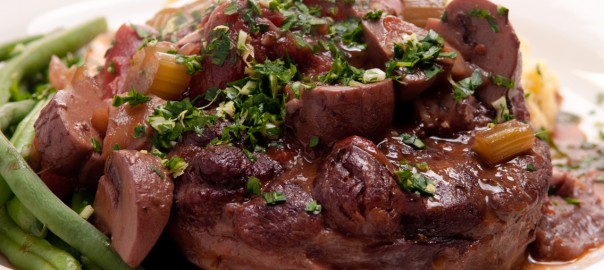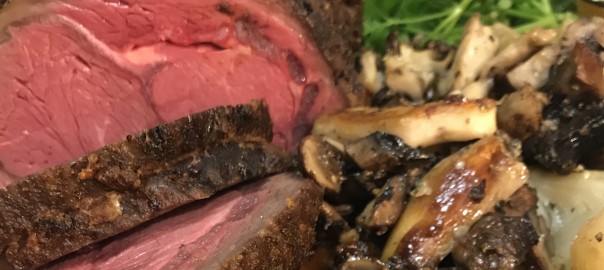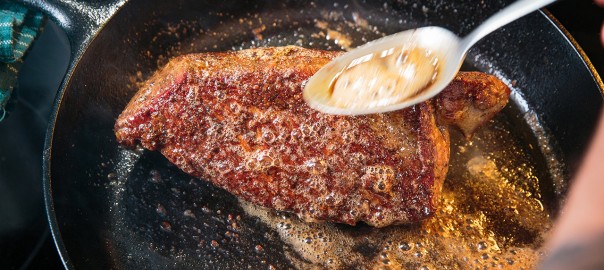When you’ve got many mouths to feed, what cooking method do you turn to?
If you’re looking to impart big, bold flavors with minimal effort, then a slow cooker should be your go-to cooking device. Cooking meat low and slow breaks down muscle fibers and ensures a fork-tender, melt-in-your-mouth meal.
Often, slow cooking is as simple as throwing all the ingredients in the crockpot and letting it go—an ideal situation when you’ve got to prepare everything else for a crowd. Set up your slow cooker in the morning, and enjoy dinner later— a long cook time and no fuss!
These recipes use cuts of meat ideal for the slow cooker: Think pork butt, beef chuck roast, beef shanks, and more. With so many different flavor profiles and cuts of meat, you’ll never get bored of some of the best slow cooker recipes we’ve found, and neither will your guests.
1. Chef Yankel’s Smoky Coffee-Rubbed Pulled Pork
Want to serve fork-tender, juicy pulled pork rife with a sweet, spicy flavor? You’ll have to give this smoky coffee-rubbed pulled pork a try. When cooked low and slow in a slow cooker, this pork butt falls apart into melt-in-your-mouth goodness.
The trick is dry rubbing the pork butt the night before with coffee grounds, chipotle powder, smoked paprika, ground ginger, mustard powder, coriander, brown sugar, and salt. Refrigerating the butt overnight lets the flavors set in, while the low and slow cooking method further brings them out.
The best part? Use one ButcherBox pork butt, and this meal will serve six people.
2. Slow Cooker Chuck Roast
A busy family’s best friend, this slow cooker chuck roast recipe delivers a hearty, stick-to-your-ribs meal with minimal effort.
You can throw the chuck roast in the slow cooker in the morning while you’re preparing breakfast and have dinner ready to go by nightfall. This roast requires only a few spices for big flavor, including basil, oregano, thyme, rosemary, and garlic.
Don’t skip the searing step—that’s where you really lock in flavor. Feel free to beef (pun intended) this roast recipe up with veggies like sweet potatoes and carrots for a complete meal.
3. Slow Cooker Beef Steak Tips
What are steak tips? Rife with robust, meaty flavor, these one-inch hunks of steak come from cuts of beef like the flank steak, tenderloin tip, and sirloin tip.
They’re lean, and delicious cooked as kebabs or in slow-cooked stews, like this slow cooker beef steak tip recipe. Creamy thanks to a combination of cooking sherry, broth, spices, and tapioca starch, these steak tips come together easily in a slow cooker. In fact, the only step is throwing everything into the slow cooker and, well, cooking. Mushrooms round out the meaty flavor of these steak tips. This is literally one of the easiest slow cooker recipes for beef we’ve found.
4. Asian Slow Cooker Pot Roast
Mix up your typical pot roast recipe with Asian flavors like soy sauce, garlic, and five spice. This slow cooker Asian pot roast is made with a sizeable chuck roast, promising to feed many mouths.
Potatoes and carrots further beef up the meal. It’s also packed with protein thanks to all that chuck roast, so you and your guests are bound to be satiated. Cooking it for 8 to 9 hours on low ensures a sweet-savory flavor that makes it difficult to put the fork down.
5. Slow Cooker Creamy Southwest Chicken
Need a meal that tastes rich and decadent but is actually healthy?
This slow cooker creamy southwest chicken recipe is the meal to try. Bold flavors abound with spices like chili powder, paprika, cumin, coriander, garlic, cayenne, and fresh lime juice. Coconut cream (or full-fat coconut milk, whatever you have on hand) makes this dish super creamy and indulgent. Feel free to serve this flavor-packed meal on a bed of veggie noodles, potatoes, or rice.
6. Slow Cooker Beef Shank Osso Buco With Lemon-Parsley Gremolata
Here’s a meal that will truly impress your guests. Beef shanks make for a more affordable option than veal shanks in this osso buco with lemon-parsley gremolata recipe. (If you don’t have a beef shank, this great slow cooker beef recipe a beef chuck roast, beef stew meat, and even short ribs can serve as a substitute for this cut.)
Braised low and slow in the slow cooker, this fork-tender beef meal is richly flavored with vegetables, white wine, balsamic vinegar, oregano, thyme, bay leaves, and cloves. It’s then topped with a lemon-parsley gremolata, which finishes the meal on an irresistibly bright and zesty note.
7. Fennel and Tomato Italian Pork Shoulder
Pork butt gets rubbed with Italian seasoning, red pepper flakes, salt, and pepper, seared to pack in flavor and build crust, then cooked low and slow in a slow cooker. Add in balsamic vinegar-sautéed fennel and onions, whole peeled tomatoes, and carrots and you’re in for an unbelievable flavor explosion with this fennel and tomato Italian pork shoulder.
8. Crockpot Cajun Pork Butt with Jambalaya Rice
Low and slow, once again, is the preferred cooking method for pork butt in this crockpot Cajun pork butt with jambalaya rice recipe. Cajun spice, paprika and veggies like colorful bell peppers pack in flavor to the jambalaya rice, while a similar seasoning blend flavors the meat.
The pork juices are the ultimate flavor booster, especially when used to plump up the rice.
For more of our favorite recipes from ButcherBox Head Chef Yankel Polak, check out our recipe page and YouTube channel.








